Welcome, dear reader! Today, we venture into the fascinating world of 2D Barcodes, exclusively examining two power-packed contenders: the QR code and the Data Matrix code.
This guide acts as your gateway into understanding the intricacies of these two-dimensional codes, drawing a detailed comparison to lay bare the differences and uses of each. Whether you are a marketer, SEO expert, or tech enthusiast, this post is enlightening and beneficial.
The past decade has seen an unprecedented expansion of digital technologies, with 2D barcodes becoming omnipresent, bridging the gap between the digital and physical worlds. From ads in the subway station to the stickers on your delivery boxes, they are everywhere, integrating seamlessly into our day-to-day lives.
Let's explore the data matrix vs. QR codes together with their similarities and differences!
A Quick Introduction to 2D Barcodes
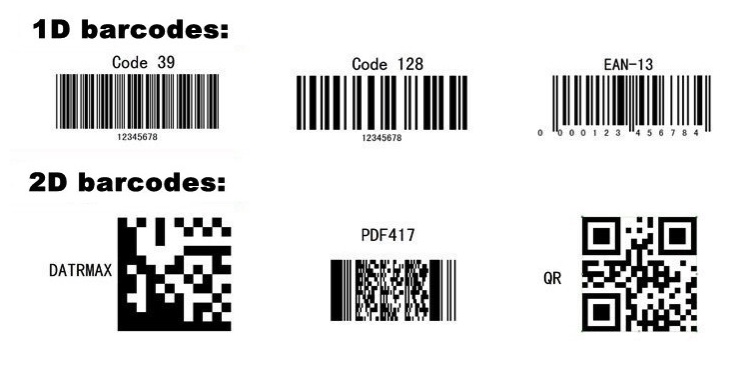
Primarily, let's dive into the subject by exploring the concept of 2D barcodes. 2D barcodes are graphical images that store information both horizontally and vertically. They came into existence to facilitate a larger data storage area in a limited space, offering a solution to the limitations of one-dimensional or traditional barcodes.
The data matrix and QR codes are indeed the most popular types of 2D barcodes, being the focal point of our exploration. They are more advanced and capable of holding an immense amount of information ranging from alphanumeric characters and URLs to even multimedia content. Their utility varies and is not confined to just inventory management or tracking; these barcodes have found extensive usage across industries and sectors.
It's vital to understand that while these may seem the same on the surface, the data matrix and QR codes have distinct features, pros, and cons facilitated by their divergent structures and designs. In essence, our comparison journey of 'Data Matrix vs QR code' starts with an understanding that despite their similarities, they are fundamentally unique and serve different requirements.
What is a QR Code?

To begin delineating the 'Data Matrix vs. QR code' comparison, let's first focus on understanding what a QR code is. QR, or Quick Response code, created back in 1994 by Denso Wave, a subsidiary of Toyota, for the auto industry in Japan, has become a worldwide sensation in recent years.
Insights into the QR Code Structure and Design
QR codes are made up of black squares arranged on a white background. Its design includes three big squares at three corners that help scanners recognize the code's orientation. Between these three squares lies the timing pattern, represented by alternating black and white modules.
This unique structure allows QR codes to be read from any direction, offering excellent user-friendliness.
Comprehending the elements/modules that make QR Code, let's shed light:
- Quiet Zone - It is the clear area around the code. For optimal readability, it should be four modules wide.
- Finder Pattern - These are the three large squares located in the top-left, top-right, and bottom-left corners. They allow scanners to recognize the QR code's position and orientation.
- Alignment Pattern - Smaller than the finder pattern, these exist to ensure successful scanning even when the QR code is distorted.
- Timing Pattern - These alternate black and white modules are present between the finder patterns. They help determine the size of the QR code.
- Version Information - Here, the version of the QR code is encoded. QR codes are categorized into 40 versions based on size.
- Format Information - It indicates the error correction level and mask pattern used for the QR code.
- Data and Error Correction Codewords - These carry the actual data and the information needed to correct it if damaged.
Further, while a typical QR code is square, its size tends to vary. The smallest code measures 21x21 pixels, while the largest is 177x177 pixels. More importantly, the QR code can store up to approximately 3000 alphanumeric characters, which is a colossal amount of information, especially when compared to standard barcodes, which can only hold around 20 characters.
Exploring the Diverse Uses for QR Codes

Having a detailed understanding of the structure and design of the QR code, let's explore the diverse uses of QR codes.
The past few years have seen QR codes being increasingly implemented in an array of sectors thanks to their flexibility and efficiency. A QR code can be used for:
- Product Details - Many retailers use QR codes on their products to provide additional information about the product.
- Website Link - QR codes are often used to direct users to a specific website or social media page.
- Virtual Stores - Some retailers create virtual stores where customers can shop using QR codes tagged to each product image.
- Payments - QR codes are now frequently used for making payments, offering a contactless and convenient option for transactions.
- Coupons/Vouchers - Many companies use QR codes to offer special deals or discounts.
- Events - QR codes are often used to deliver concert/entertainment tickets or to provide additional information about an event.
- Marketing Campaigns - From emails to posters to TV commercials, QR codes now exist almost everywhere in marketing campaigns.
- Location - A QR code can also house geolocation data, enabling users to locate businesses or stores using GPS.
- Authentication - Some businesses use QR codes as an additional layer of security, ensuring only authenticated users gain access to certain areas.
This unique ability of the QR code to store ample information in a small space comes in handy in our digital world, where brevity, convenience, and user-friendly interfaces reign supreme.
What is a Data Matrix Code?
To continue our deep dive into the 'Data Matrix vs. QR code' comparison, it's time to spotlight the other heavy hitter in the two-dimensional barcode arena - the Data Matrix code.
Equally significant yet different in its functionality and usage, the Data Matrix code offers its unique value in our day-to-day lives. So, what is this Data Matrix code exactly? Let's uncover its mysteries.
A Data Matrix code is another type of two-dimensional barcode that came into existence back in the 1980s. Its invention by International Data Matrix, Inc. was primarily intended to provide a compact yet high-capacity data encoding method for industries with a high demand for data storage.
Essentially, they consist of black and white cells or modules arranged in either a square or a rectangular matrix. An increasing number of rows and columns can be used to increase data capacity. While it's visually different from the QR code, the Data Matrix code also possesses a high density, allowing it to encode large amounts of data in a small area.
Decoding the Structure of a Data Matrix Code
Like our deep dive into the QR code structure, let's take a similar journey to understanding the basic layout of a Data Matrix code. Its design is quite distinctive, with two solid adjacent borders, known as the 'L' pattern, and two dotted borders on the top and right side, known as the 'clock tracks'.

Dissecting the Data Matrix code into its constituent parts, we come across the following elements:
- Finder Pattern - The 'L' shape created from two solid borders (left and bottom) stands as the Finder Pattern. This helps with locating and orienting the code, keeping it readable despite possible distortions.
- Clock Tracks - The dotted lines on the top and right of the 'L' are called clock tracks, used by scanning devices to determine the size and density of the code.
- Data Region - The remaining area inside the boundaries is the data region, where the data is actually encoded.
The size of Data Matrix codes varies. It starts from a minimum of 10x10 modules, which can store up to 3 numeric or two alphanumeric characters. The maximum size is 144x144 modules, capable of storing up to 3116 numeric or 2335 alphanumeric characters.
Uncovering Practical Uses of Data Matrix Codes
Now, understanding the structure and design of a Data Matrix code takes us to the next part of our discussion: exploring the diverse uses for Data Matrix codes.
Despite its age, Data Matrix codes have found renewed vigor in today's digital realm, with extensive implementation across numerous sectors. Here are a few examples of where you might come across a Data Matrix code:
- Medical Devices and Pharmaceuticals - Due to their high data capacity and small size, Data Matrix codes are frequently used on medical devices and pharmaceutical packages.
- Manufacturing - In industries where parts need to be tracked and identified, such as automotive or electronics, Data Matrix codes are prevalent.
- Postal Services - Many postal services use Data Matrix codes to sort and track mail.
- Aerospace - Data Matrix codes are used for high-density labeling of small parts.
- Trade - Matrix codes can also be used in shipping and distribution industries for tracking goods and containers.
- Retail - Some companies use matrix codes for item-level tagging on their retail goods.
- Defense & Government Agencies - Owing to its durability and robustness against damage, Data Matrix codes are often chosen for the government's high-security applications.
The Data Matrix code, similar to a QR code, provides a robust solution for quick and effective data capturing and handling. When industries require smaller codes with greater data capacity and good error correction, Data Matrix code emerges as an optimal solution.
How to Scan Data Matrix and QR Codes

As we continue our journey through the 'Data Matrix vs. QR code' discourse, it's enlightening to know what each code offers. Now, let's shift the gears from understanding and comparing to learning how to utilize these life-integrating technologies. Specifically, let's focus on the practical side of things and learn how to scan Data Matrix and QR codes.
Remember, the 2D codes are only as useful as their ability to be read and used effectively, and understanding the scan process can be quite the game-changer, opening up a world of seamless data transmission at your fingertips. So, let's get to it!
Understanding the Process of Scanning Data Matrix and QR Codes
In the grand scheme of things, scanning a Data Matrix or QR code may seem trivial. However, it's surprising how many of us find ourselves at odds when faced with these seemingly benign 2D modules that interlink the digital and physical worlds.
Whether you're a beginner to the vast field of 2D codes or an experienced marketer looking for a refresher, don't worry! We've got you covered.
- Equip Yourself with a Reading Device: Before you start, ensure you have a device capable of scanning the QR or Data Matrix code. In most cases, this would be a smartphone with a camera, but in some specialized industry settings, a handheld scanner or a fixed scanning system may be utilized.
- Install a Scan App: Many smartphones nowadays come equipped with a built-in scanning function in the camera app. By just opening your camera and pointing it toward the 2D code, it should automatically recognize the code and provide a prompt to open the encoded data.
However, if your smartphone camera doesn't offer this feature, you will need an app to scan the QR and Data Matrix codes. There are numerous free apps available in both Android and iOS app stores, such as i-nigma, QR Code Reader, and NeoReader. Pick any trusted app you prefer, download it, and you're ready to begin scanning!
- Scan the Code: Open the scan app or your camera, then hold your device over the code, ensuring the code is inside the viewfinder on your screen. Try to hold your device steady for better results. The app will automatically recognize the code and process it.
- Read the Data: Upon successful scanning, the app will instantly prompt the action correlated to the encoded data in the 2D code. This could be anything from opening a website, revealing a text, dialing a phone number, or even opening a location on your Maps app.
Most importantly, scanning is an extremely secure process. Unless the QR or Data Matrix code you're scanning is malicious or directs to a harmful website, there's typically no risk involved. After all, you always have the choice of whether to follow the prompt after scanning or not.
Remember, the primary demands for scanning these codes are good lighting, an unhindered view of the code, and a decent internet connection (especially if the decode triggers a URL).
Comparing Data Matrix vs. QR Code
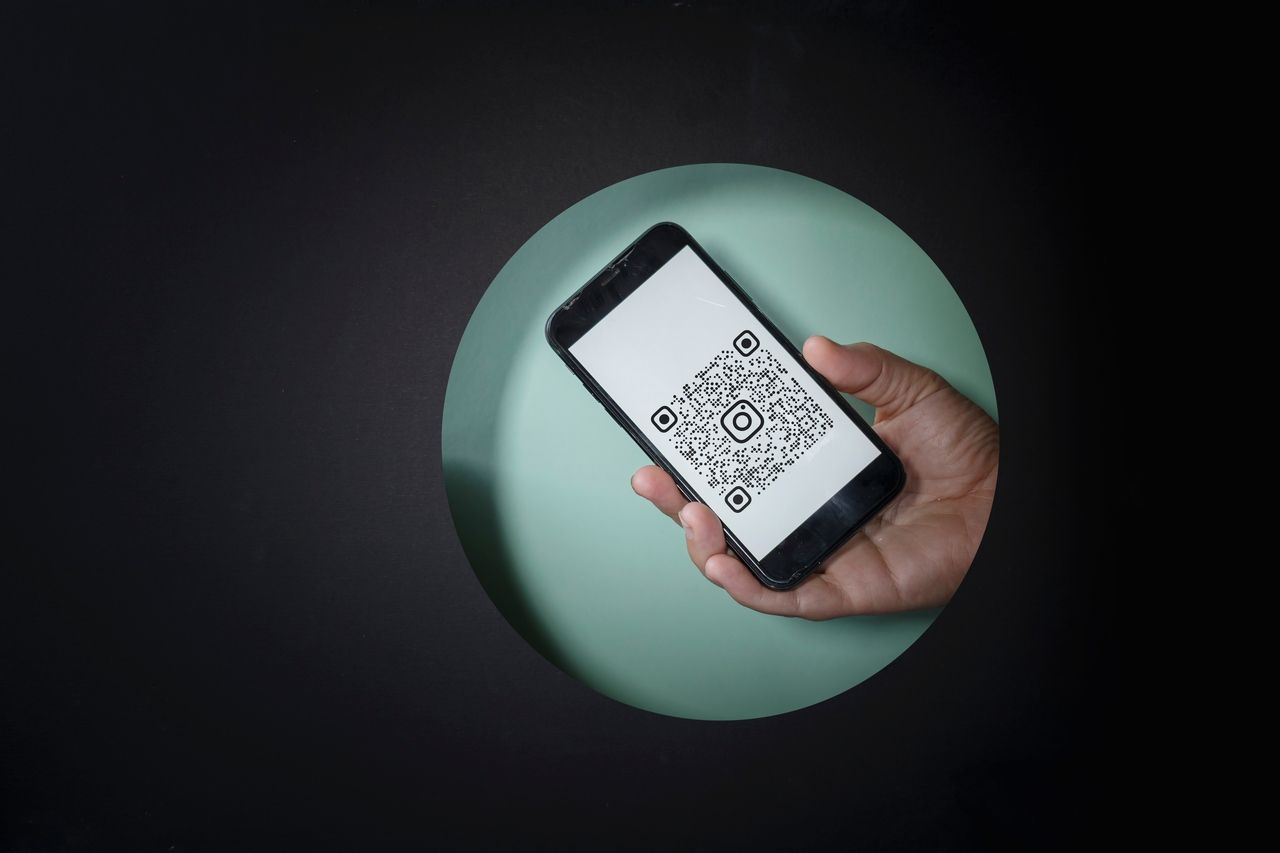
As we rigorously continue on our fascinating journey navigating the 'Data Matrix vs. QR code' discussion, we now turn our attention to a detailed comparison of these code types. After immersing so deeply into each code's structure, design uses, and scanning process, it's time to take a step back and observe these two power-packed codes side by side.
Are you curious to know what makes a QR code different from a Data Matrix code? Wondered how size variations, code durability, industry regulations, and language constraints influence the choice of these codes? Stay tuned as we unravel the answers to all these questions and more!
Let's unmask the secrets of the Data Matrix and QR codes as we delve deeper into their characteristics, differences, and potential applications. Ready? Let's dive in!
Characteristics of Data Matrix vs QR Codes

As we've already familiarized ourselves with the structure and uses of both QR and Data Matrix codes, let's identify key characteristics that distinguish them from each other:
QR Code Characteristic:
- Versatility - QR Codes can house a variety of data types like numeric, alphanumeric, binary, and even Japanese characters.
- User-friendliness - Truly ideal for consumer-facing situations as they can be easily scanned even by smartphones.
- Functionality - QR codes can function well even if 30% of the code gets damaged.
- Variability - Varying in size, QR codes can house more data as their size increases, with 40 different versions available.
Data Matrix Code Characteristic:
- High Capacity - Despite its compact size, it has a high data storage capacity.
- Durability - Data Matrix codes can still be scanned even when they are considerably damaged; they can withstand extreme conditions.
- High Density - This barcode can store great amounts of data in a relatively small area, beneficial for industries that require high-density labeling.
- Error Correction - Featuring a great error correction and verification process, it reduces the chances of data loss.
The Difference between a Data Matrix Code and a QR Code

To advance our data matrix vs. QR code discussion, it's pertinent to lay out the distinct differences between the two, despite their innate similarity of being 2D barcodes.
The prime difference lies in the kind of applications they are used for. QR codes find extensive use in consumer applications for their ease of use, versatility, and smartphone readability. Conversely, Data Matrix codes are more industry-focused owing to their high density, durability, and smaller size.
The structure of QR and a Data Matrix code is another noticeable difference. The QR code's square arrangements containing three larger squares in its corners contrast starkly with the Data Matrix code's 'L' shaped boundaries and enclosed data storage.
The storage capacity also portrays a difference. While both can store significant data amounts, the QR code leads the game with the ability to contain up to 3000 alphanumeric characters in its largest version.
Size variations: Data Matrix vs. QR codes
The size of your desired 2D codes predominantly depends on the amount of data you wish to encode. The smallest version of QR codes is 21x21 pixels, while the largest expands to 177x177 pixels, with the encoded data volume deciding the size.
On the other hand, Data Matrix codes can range from 10x10 modules (smallest) to 144x144 modules at their maximum. Despite their size, Data Matrix codes are known for their high-density data storage, allowing large data volumes in restricted spaces.
Assessing Code Durability during their Lifecycle
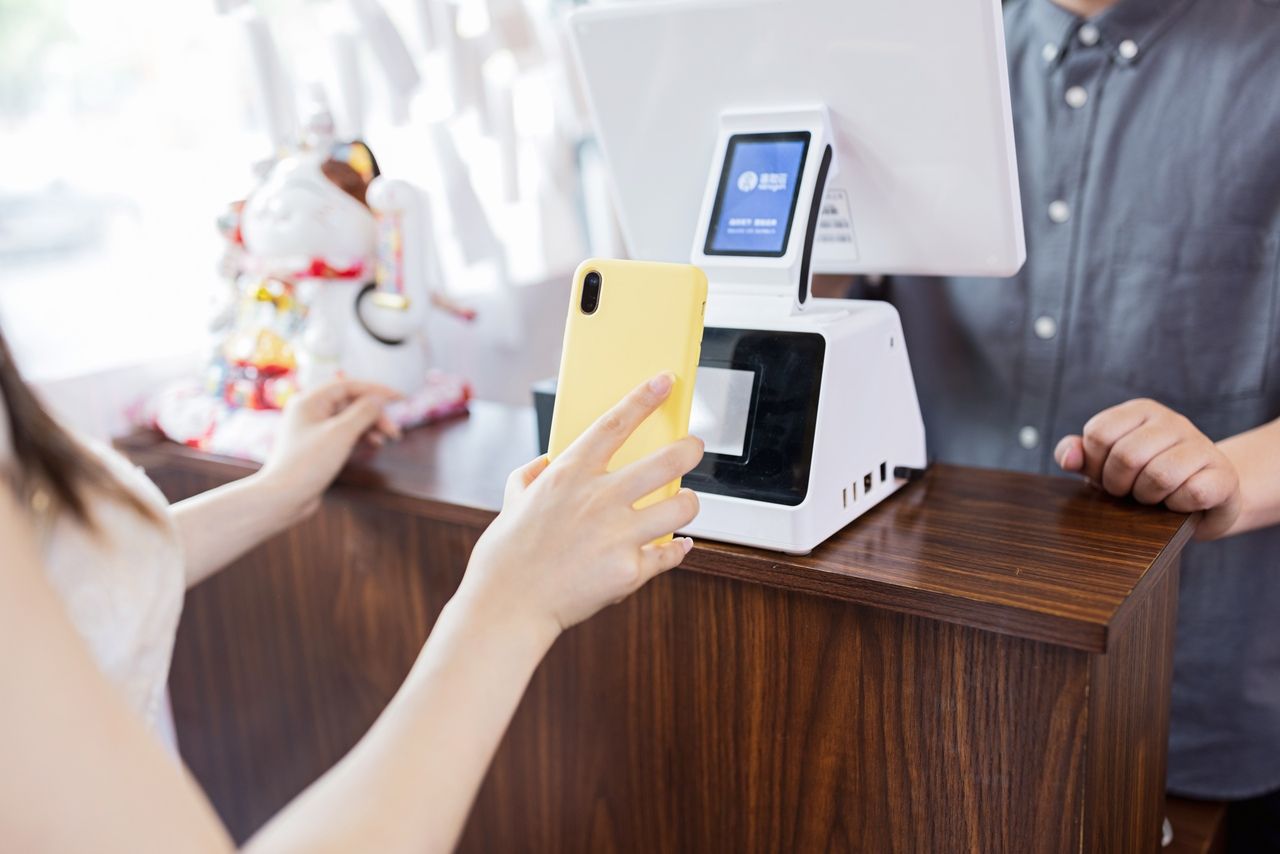
Durability is another criterion where QR and Data Matrix codes differ. With a built-in error correction system, QR codes can work well even when around 30% of the code gets damaged or obstructed. In contrast, the Data Matrix code's excellent durability enables it to withstand rough conditions and tolerate significant damage - it remains readable even when up to 60% of the code is distorted.
Industry Regulations Impacting Code Choice
Industry regulations play a crucial role in choosing between a QR code and a Data Matrix code. Certain industries demand high data capacity within a minimal area, a requirement where Data Matrix codes shine brightest.
Conversely, if the industry requires a consumer-driven application, including marketing campaigns or product information sharing, QR codes emerge as the best fit.
Language Constraint in Codes
Lastly, let's consider the language constraints in QR codes and Data Matrix codes. Ideally, both QR codes and Data Matrix codes are designed to store data in various types, such as alphanumeric (numbers and letters), binary (double symbols), and numeric only (just numbers).
However, QR codes have an added advantage as they can also encode Japanese characters, broadening their usage scope across regions.
From size variations, durability standards, industry-specific needs, and language constraints, quite a few factors impact the choice between a QR code and a Data Matrix code, making each of them uniquely suitable for certain applications and sectors.
Making a choice: Data Matrix or QR Code
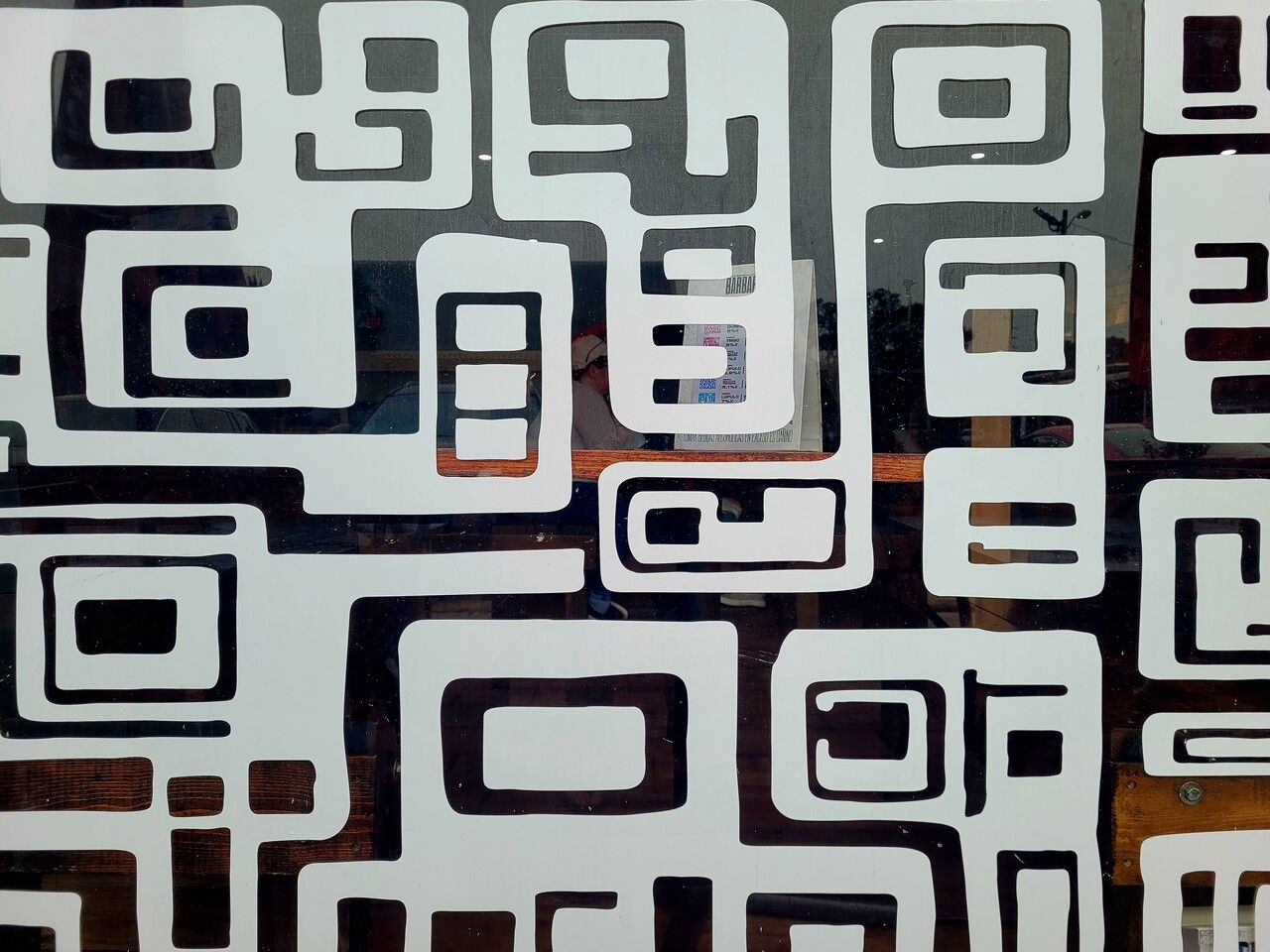
The fascinating journey we embarked on, navigating the intricate world of 2D barcodes, has brought us face to face with the pivotal question: Data Matrix or QR code - which is the right choice for you?
As you step into the universe of barcodes and 2D codes, you might find yourself standing at a crossroads, wondering which way to go. While both Data Matrix and QR codes offer compelling features and bring unique value to the table, your choice ultimately depends on your requirements, the scope of usage, and the nature of the data you wish to encode.
Recognize Your Needs
Determining the appropriate 2D code for your application starts with understanding your business needs and identifying the purpose of the code.
- Data Volume: Gauge the volume of data that you need to embed within the code. QR codes can hold up to approximately 3000 alphanumeric characters, whereas even the largest Data Matrix code can hold up to 2335 alphanumeric characters. If your data exceeds this range, QR codes become a more suitable choice.
- Space Constraint: Assess the amount of space you have for printing the code. If it's limited, Data Matrix codes, known for their high data density, can deliver a practical solution, encoding larger volumes of data in minuscule spaces.
- Durability: Evaluate the conditions to which the code would be exposed. If it demands high resilience, the Data Matrix code can withstand substantial damage or distortion and still remain functional, making it considerably more durable than QR codes.
- Industry Requirements: Consider any industry-specific regulations. Industries like healthcare, electronics, and automotive often favor Data Matrix codes due to their compactness and high density. On the other hand, sectors that engage directly with consumers, like retail and marketing, find QR codes more suited due to their compatibility with smartphones and their versatility.
- Consumer Interaction: Decide the degree of consumer interaction required. If your goal is to facilitate a consumer-driven activity like web page navigation, product details, or easy payments, the QR code becomes the optimal choice. It is more recognizable by the general public and can be seamlessly scanned using any smartphone.
When making your choice, remember that it's not simply a matter of 'Data Matrix vs. QR code,' but rather a choosing journey to realize 'which 2D code aligns perfectly with my requirements.'
Suit Your Sector
Choosing the right 2D symbology can influence your business's success to a considerable extent. As each industry comes with its unique challenges and demands, keep in mind that one-size-does-not-fit-all. Here's a quick snapshot of how certain sectors could benefit more from either QR codes or Data Matrix codes:
- Retail & Marketing: The QR code takes the lead in a world of quick responses and faster transactions. Its smooth interoperability with smartphones and wide-ranging versatility enable marketers to offer rich, consumer-facing content from websites, coupons, tickets, payments, and more.
- Healthcare & Pharmaceuticals: The Data Matrix code, recognized for its high data density, compactness, and durability, brings numerous advantages to this sector, offering a steady solution to imprint extensive information on limited areas, notably on medicinal packages and device labels.
- Manufacturing & Automotive: Both QR and Data Matrix codes share the limelight in this sector. While the Data Matrix code is a standard in auto component tracking and electronic manufacturing due to its compactness and durability, QR codes are also widely used for their easy readability and versatility.
- Postal Services & Logistics: Improving sorting and tracking efficiency, Data Matrix codes primarily find patronage in these sectors due to their superior damage resistance.
The 2D code you choose should ultimately reflect your industry's demands and your business's unique needs. Be it the ubiquitous QR code or the robust Data Matrix code, your dedicated companion in 2D barcodes awaits your discerning choice.
2D Code Applications
With a deeper understanding of these dynamic 2D codes, it's time to unveil the wide array of applications they hold and the significant value they provide in various fields.
From innovative applications to actionable insights into inventory management, this chapter is your go-to guide for understanding how 2D codes transcend beyond ordinary barcodes and offer manifold strategic solutions. We'll also delve into how these unique codes can be harnessed for effective business and marketing initiatives.
Innovative 2D Code Applications

Both QR Codes and Data Matrix codes, owing to their compact size yet substantial data storage, find widespread usage in multiple innovative applications.
- AREvent planning: 2D codes can be used for event ticketing, where the personalized QR code sent to the user works as an entry pass. This not only streamlines the entry process but also reduces paper waste.
- Augmented Reality Experiences: QR codes make augmented reality more accessible. Scan the code, and users can unlock immersive experiences on their smartphones, creating an engaging interface for educational applications or online gaming.
- Digital business cards: Bid adieu to traditional paper cards. Digital business cards with QR codes emerged as a popular trend. They reduce clutter, offer more information, and are easily shareable.
The Significance of 2D Codes in Managing Product Inventory
Inventory management is a crucial facet of supply chain operations, which could be revolutionized through 2D codes. Here's how:
- Track and Trace: 2D codes enable real-time tracking of inventory, which can drastically reduce lost goods or misplacement.
- Stock Accuracy: Scanning 2D codes on inventory can autonomously update stock levels, leading to highly accurate stock information.
- Speed & Efficiency: Barcode scanning speeds up the inventory counting process, reducing manual errors and improving operational efficiency.
Harnessing 2D Codes for Effective Business and Marketing
No matter the industry, 2D codes can reimagine business operations and marketing tactics.
- Information Sharing: Businesses can use QR Codes to deliver comprehensive product information, user manuals, or promotional content, fostering a consumer-friendly environment.
- Customer Engagement: QR codes on product packaging or marketing communications allow brands to interact with their customers better, offer value-added services, and build customer loyalty.
- Payment Processing: Many businesses, big or small, are using QR codes for making and receiving payments, making transactions fast, secure, and hassle-free.
Tracking Marketing Campaigns through 2D Codes
2D codes brilliantly serve as excellent tools for amplifying marketing strategy and tracking the effectiveness of campaigns.
- Lead Capture: Businesses can efficiently capture customer information when they scan a QR code to avail of an offer, thereby generating potential leads.
- Measurement of Campaign Success: Codes can be tagged to specific campaigns, and each scan can be tracked to gauge the exposure and success of the marketing drive.
- Personalized Advertising: QR codes can provide a personalized customer experience by directing them to customized web pages, thereby improving engagement and conversions.
Opportunities for Full-Scale Customization of 2D Codes
Customization of 2D codes is another rising trend that makes the codes visually attractive and in sync with the brand identity.
- Design Flexibility: Logos, colors, and designs can be incorporated within the QR code, making it a part of the brand identity.
- Unique User Experiences: Each 2D code can be linked to different online experiences, offering a tailored response to individual users.
Editable Functionalities of 2D Codes Post-Printing
What happens if the information linked to a QR code changes? No worries, dynamic QR codes have you covered.
- Dynamic Content: Dynamic QR codes allow you to change the content it links to, even after printing. This lets you update your campaign or information without having to generate new codes.
- Long-term Relevance: Once printed, dynamic QR codes can remain relevant and repeatedly used for different campaigns, products, or events.
Key Takeaways of Data Matrix vs. QR Codes
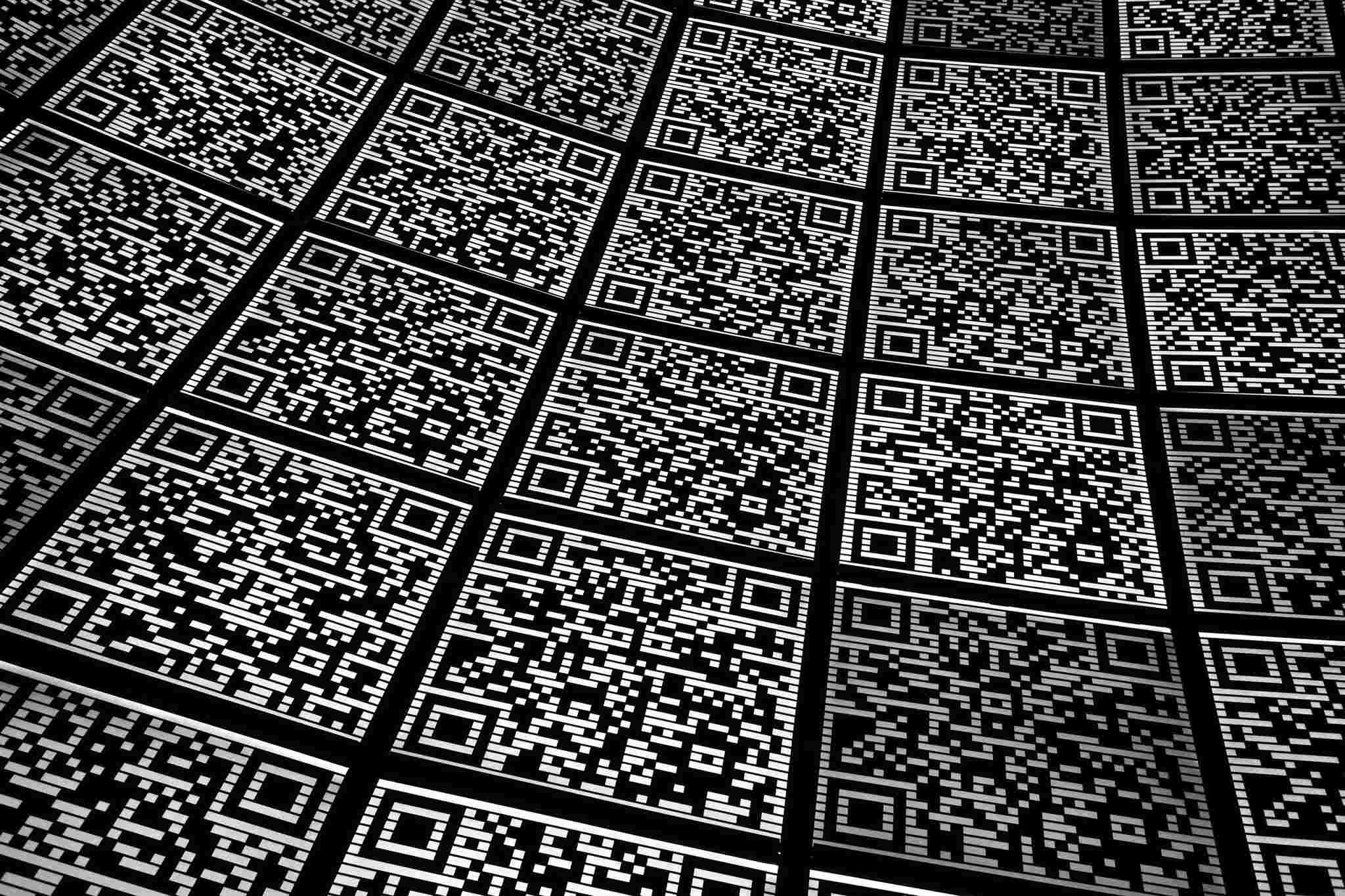
Let's remind ourselves of some significant insights:
QR Codes:
- Excels in versatility and user-friendliness.
- Useful in displaying a variety of data types.
- Works well in consumer-oriented applications due to their smartphone compatibility.
- Can function efficiently, even if a portion (up to 30%) of the code gets damaged.
- The size increases as the data quantity increases, with 40 different versions available for an extended data range.
Data Matrix Code:
- Compact but can hold substantial data.
- Highly durable and can withstand significant code damage.
- High-density data storage allows considerable data amount in smaller areas.
- Features a robust error correction process, lowering the chances of data loss.
Whether it's the Data Matrix or the QR code, these 2D codes are undoubtedly the powerhouses of digital transformation. Through their application in various sectors, they touch the lives of millions, making data interaction simpler, quicker, and more effective.
From inventory management, event planning, manufacturing, and healthcare to marketing campaigns, payment systems, and daily consumer interaction, these codes are integral to technology-enabled strategies across industries.
Which 2D code is right for you?

If you deal frequently with customer-facing transactions or marketing applications, QR codes likely offer the best solution thanks to their wide adaptability and effortless smartphone scanning.
If you're in an industry that prioritizes size efficiency and extra durability, like automotive parts or pharmaceuticals, Data Matrix codes come to your rescue with their compact design and impressive fault tolerance.
While both QR and Data Matrix codes have their unique strengths and fields of application, what matters most is how these tools can serve you best and contribute the most value to your business or personal use.
Now armed with the knowledge and insights gained through the intriguing 'Data Matrix vs. QR code' narrative, we hope you feel empowered to make an informed decision, choosing the right 2D code that resonates best with your needs and demands.
Conclusion
What a long, fascinating journey it's been! Traversing through the length and breadth of the 'Data Matrix vs. QR Code' narrative, we've acquired a wealth of knowledge, shed light on complex phenomena, and demystified the world of 2D barcodes.
In concluding our 'Data Matrix vs QR Code' series, it is important to realize that choosing between these two is not about selecting the 'best' one but rather about identifying the 'right' one. It all boils down to your specific needs, the nature of the data you wish to encode, your intended user, and the environmental conditions the code will face.
QR codes may serve you best if your usage involves consumer-facing applications or requires more detailed data. Alternatively, if you're dealing with space constraints, toil under harsh conditions, or work in an industry-centric setting, Data Matrix codes may be your preferred choice.
Explore these blog posts before you go:


